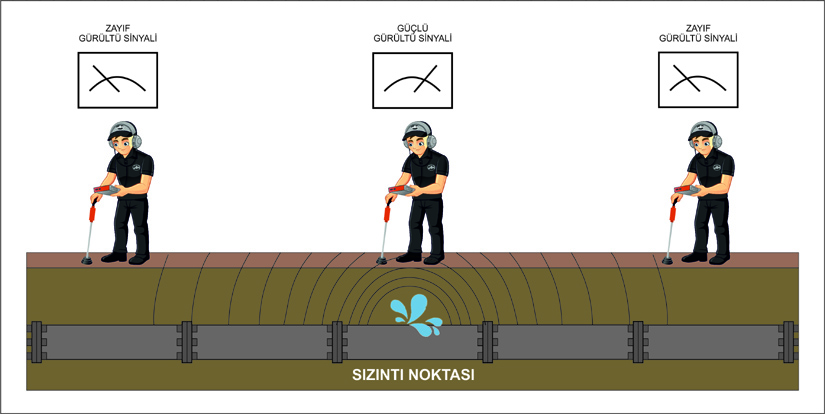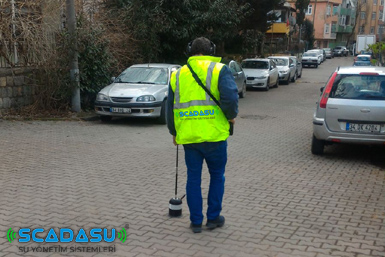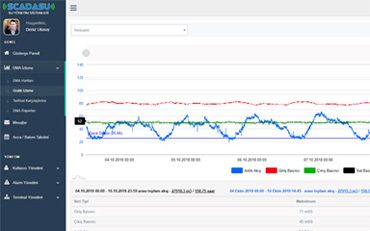Consult our technical team

Water losses can occur at many points within the water supply system. Physical Losses occur mostly in service connections in our country. Generally in urban infrastructure works (wastewater collection, road asphalting, natural gas connections, telephone, electricity etc. connections) excavation etc. Service connections are damaged during the operations and leaks begin to occur. Damaged service connection pipes cannot be repaired at the desired level by the companies carrying out the relevant infrastructure activities. As a result, relatively low flow leaks begin and high volumes of water are lost over many years in poorly repaired service connections. Leakage water does not come to the surface at the connection points where leakage occurs most of the time and disappears by leaking underground.
Leaks frequently occur in plastic (PVC) water pipes used in water distribution networks, which are kept under the sun for a long time. Leaks start from cracks in the pipes and water losses continue for many years until leaks are noticed and repaired. In addition, losses can occur in the old pipes, various valves and connections in the supply and distribution lines.
Searching, determining, locating and repairing leaks consists of three stages. These stages can be defined as Awareness-A, Location-L and Repair-R, and ALR for short. In this approach, leaks in pipes, overflows in warehouses or losses at different points occur in three stages:
As the time spent by the administrations to become aware of the water loss / leak, to locate it and to repair it, the volume of water lost increases. It may take weeks or even years until an underground leak is noticed. Therefore, leakage awareness, locating and repair times should be reduced within the strategy of reducing water losses.
It is very important that water administrations understand the formation of different types of leaks within their systems, evaluate the leak flow time and ALR processes and the total volume of physical water losses. Types of leaks are listed below:
Active leak control is a vital application for efficient water loss management as well as being cost effective. Ground microphones electronically amplify the sound / noise caused by the leak. These devices can be installed for use in contact or monitoring mode. The contact mode is used to listen to the fittings and is similar to the electronic listening sticks.
Monitoring mode is used to search for leaks in pipelines between fittings. In this method, the ground microphone is placed at certain distances on the pipeline and the changing noise level is monitored as it approaches the leak point. When the presence of a leak is detected by the acoustic recorders or leak noise correlator, the site team can locate the leak point.
Listening with an acoustic ground microphone is the fastest and most effective detection management.


SCADASU Web-based management software can be integrated with your other systems and easily manage from devices such as computers, smartphones and tablets.